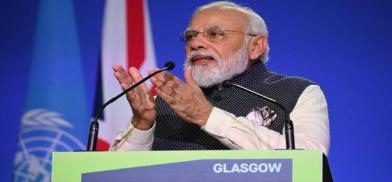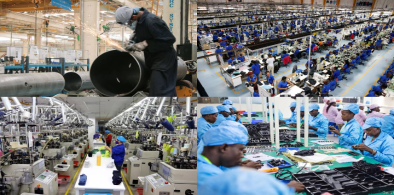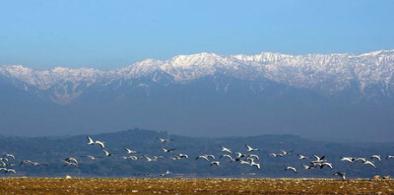Glasgow and South Asia: Questions on transition towards net-zero economy
Carbon finance is expected to play a critical role in leveraging private sector finance for flourishing regional power trade between Bangladesh, Bhutan, India and Nepal, writes Partha Pratim Mitra for South Asia Monitor

It is important to see the global perspective of the Conference of Parties (COP 26) held at Glasgow before we take up the South Asia context. Some key takeaways from Glasgow have been the declaration to collaborate on climate action between the US and China, common rules on carbon markets for carbon trading to avoid loopholes and prevent double counting of such credits both by the buyer and seller, the commitment of 104 countries to reduce methane emissions by 30 percent between 2020 and 2030, and the pledge by 110 states for $19 billion to tackle deforestation.
The build-up of the global concern on climate was through the proposed six climate positive measures for governments to take once they go about building back their economies from the ravaging impact of Covid-19, which threatens to re-emerge strongly through a new virus strain.
The six climate positive measures involve a green transition that accelerates de-carbonization of all sectors, creation of sustainable green jobs, ensure a fair transition, end fossil fuel subsidies, making the polluter pay principle the core of accountability, confronting climate risks and seeking global cooperation of all countries. The looming climate emergency, as the situation has been described, calls for a post-pandemic recovery that needs to trigger long-term systemic shifts that will alter the trajectory of CO2 emissions in the atmosphere. The entire strategy of planning the transition has been described as Build Back Better from the current crisis.
What COP 25 did
Every COP has been globally important, the Paris COP particularly so. The Paris Agreement (COP 25) has within it a built-in mechanism, known in popular climate parlance as a ‘ratchet mechanism’, whereby countries submit new and more ambitious goals every five years for their nationally determined contributions (NDCs) -- their commitments to reduce GHGs. Countries would submit new “intended nationally determined contributions” (INDCs) every five years, outlining how much they intend to reduce emissions. Each submission would be more ambitious than the last, thereby ratcheting up the entire process.
The INDC submissions would be reviewed to assess their overall impact on stemming the rise of global temperatures. In particular, it will be benchmarked against the long-term goal set up in the text which at Paris was 2 degrees Celsius. A weak long-term goal will mean the ratchet mechanism for the countries will make them work even harder than what they have done earlier.
Covid-19 pandemic saw the postponement of COP26 to 2021. The Asia and the Pacific region has been described as the source of more than half the world’s GHGs, and also where the battle against climate change will be won or lost. It is, therefore, important to look at the international challenges in the regional perspective in order to strategize in the battle for mitigating and adapting to climate change.
South Asia scenario
In South Asia, challenges of pervasive poverty, environmental degradation and extreme weather events due to climate change have become endemic in the ecosystem. The global effort and the consensus arrived at in 2015 made the world community reach two landmark agreements, namely, The 2030 Agenda for Sustainable Development and The Paris Agreement on Climate Change. Within this twin global framework, the regional effort will have to be consolidated. The central plank of these two global frameworks seek to address the issue of ensuring a sustainable and clean development process.
While the Paris Agreement is built on commitment to keep global warming restricted to 2°C to make the clean transition sustainable, the sustainable development agenda contains 17 Sustainable Development Goals (SDGs) and 169 targets in different sectors to make the transition possible through sectoral efforts. Under both Paris Agreement and SDG, every country will implement its own climate action plan that will be reviewed periodically.
South Asia comprises of eight countries: Afghanistan, Bangladesh, Bhutan, India, the Maldives, Nepal, Pakistan and Sri Lanka. It is estimated to have a population of about 1.5 billion, growing annually at 1.8 percent. It covers only 4.8 percent of the world's total land area. It is recognized in the region that ending poverty must go hand-in-hand with strategies that build economic growth and addresses a wide range of social needs including education, health, social protection and job opportunities while tackling climate change and environmental protection.
It has been estimated that by the middle of the 21st century, at least 50 percent of South Asia will be residing in urban areas. This 'development' is expected to cause a strain on the supply of natural resources which could lead to degradation of the environment.
India’s targets
The overwhelming dependence on agriculture and natural resources for livelihood opportunities make the region vulnerable to climate change. Extreme weather events such as drought, flooding, and tropical cyclones have increased their frequency in recent years with growing intensity, and have contributed to a decline in the production of grains and industrial crops, fish supply and forest harvests. According to recent reports, approximately 17.5 million people across South Asia have been affected by monsoon flooding in 2020 amid the Covid-19 crisis.
Coming to individual countries and their commitments at COP 26, India not only announced a 2070 net-zero target but also targets of 500 GW non-fossil fuel energy, 50 percent of the country’s installed capacity through renewables, 45 percent reduction in the carbon intensity of its economy and a reduction of 1 billion tonnes carbon emissions by 2030. India’s development process towards reaching its net-zero target will need to include sectoral green transition strategies for energy, transport, agriculture, water and urban development with detailed investment plans to be implemented in the next decade. The Glasgow Climate Pact calls to accelerate the “phase-down” of unabated coal power from plants that don’t use carbon-capture technology.
Both Pakistan and Bangladesh have cancelled all coal plants not currently under construction. It must, however, be recognized that many developing countries are forced to rely on coal as a cheap and the only secure resource for their critical energy needs. Coal also generates many jobs. Reducing dependency on coal will need significant financing, and a phased approach to ensure a just transition.
It is, therefore, significant that India, along with Indonesia, the Philippines and South Africa signed up as the first recipients of a multibillion-dollar pilot programme aimed at accelerating their transition from coal power to clean energy through the Accelerating Coal Transition Programme of the Climate Investment Funds (CIF) established in 2008 to mobilize resources and promote investments for low carbon, climate-resilient development in select middle income and developing countries.
Carbon finance and private sector
Carbon finance is expected to play a critical role in leveraging private sector finance for flourishing regional power trade between Bangladesh, Bhutan, India and Nepal. The World Bank along with Bhutan will set up a Bhutan Climate Fund to monetize the carbon credits generated from the export of hydropower to India.
The transition to net zero is a private sector-led model with governmental support and financial institutions have been at the forefront of the drive to net zero. The Glasgow Financial Alliance for Net Zero (GFANZ) launched in April 2021 brought together more than 450 institutions, representing $130 trillion of financial assets (40 percent of the global total), that promised to align their portfolios with net-zero goals. To put the trend in perspective, McKinsey's analysis indicates that a net-zero transition would require $150 trillion of capital spending, two-thirds of it in developing economies.
How much of it would actually come to South Asia and how would it lead the transition towards a net-zero economy are questions that would depend on the time and pace of such transition that is brought about at the grassroot level by governments, the private sector and the civil society.
(The writer is a retired Indian Economic Service officer. The views expressed are personal. He can be contacted at ppmitra56@gmail.com)

















Post a Comment